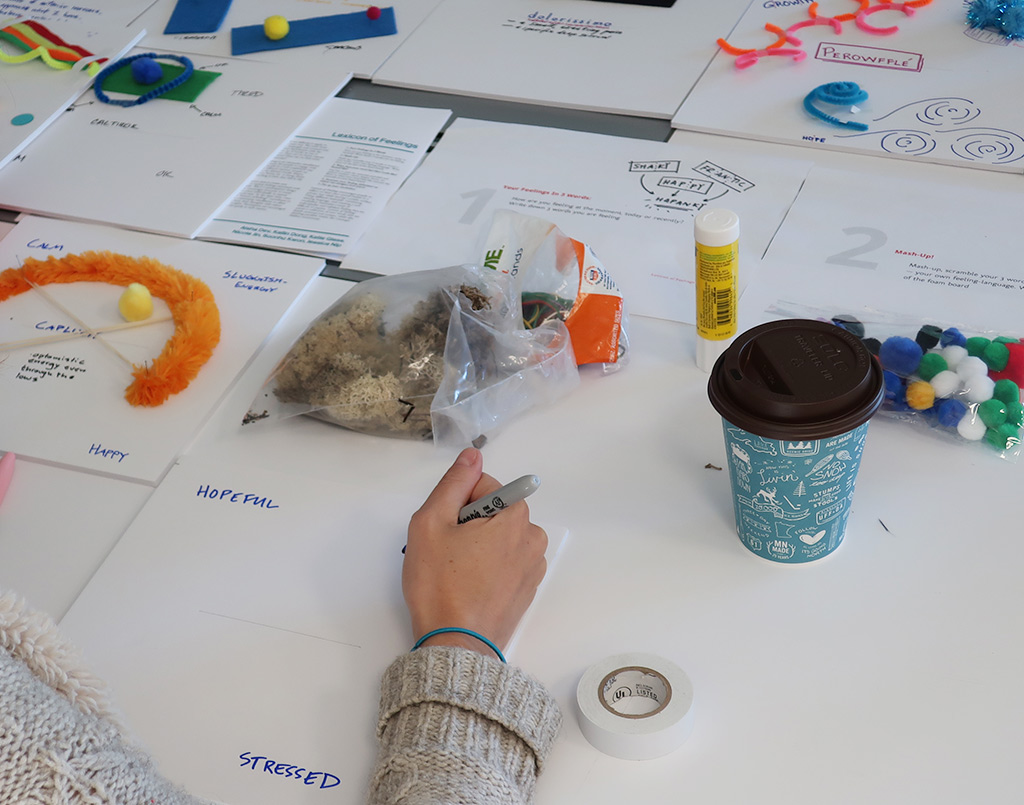
Aisha Dev, Kailin Dong, Katie Glass, Zhiye Jin, Soonho Kwon, and Jessica Nip
Originally published on Medium
An article detailing the development of Lexicon of Feelings, a project for New Ways To Think: Materializing Mental Health, September–October 2018
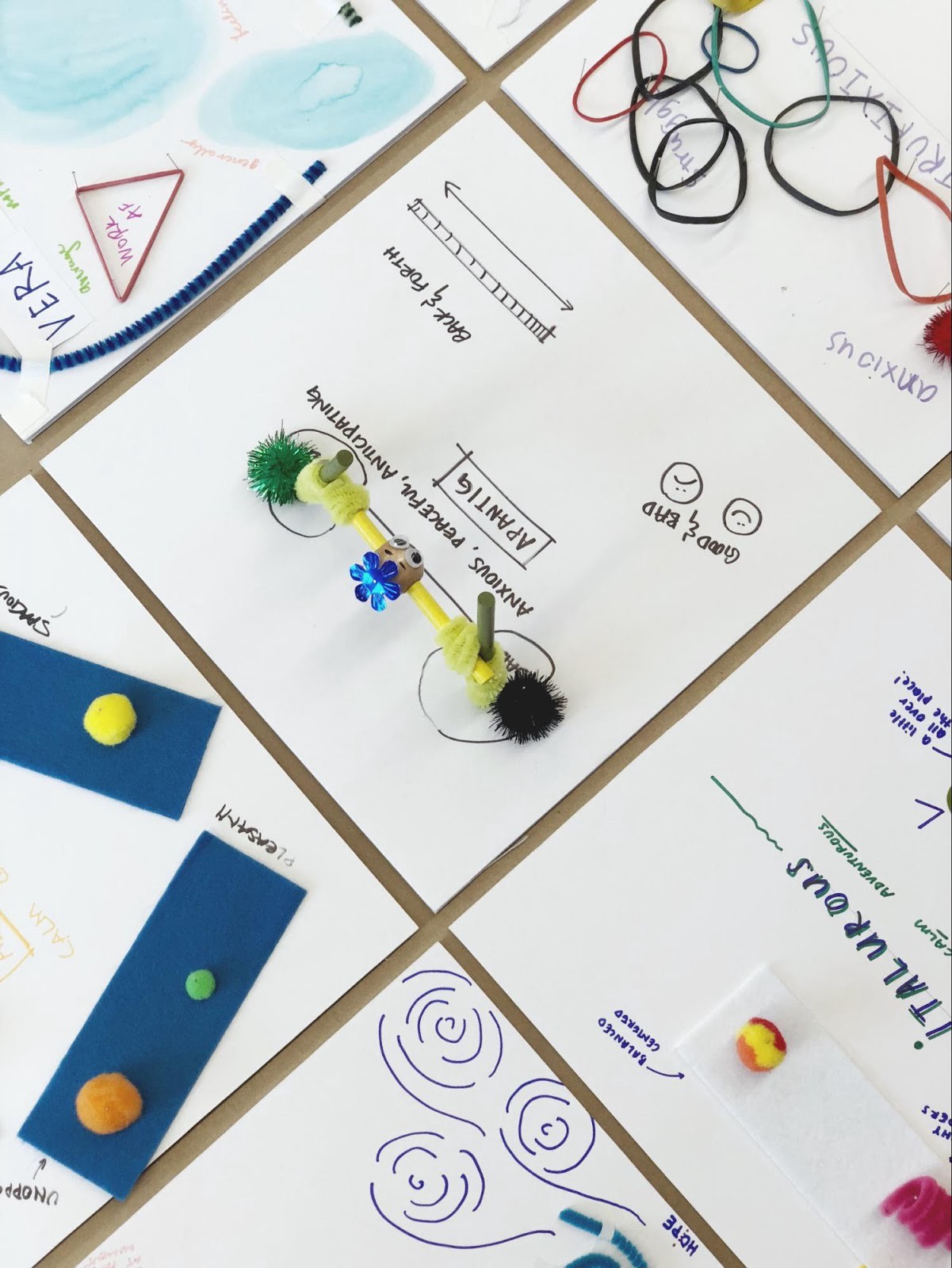
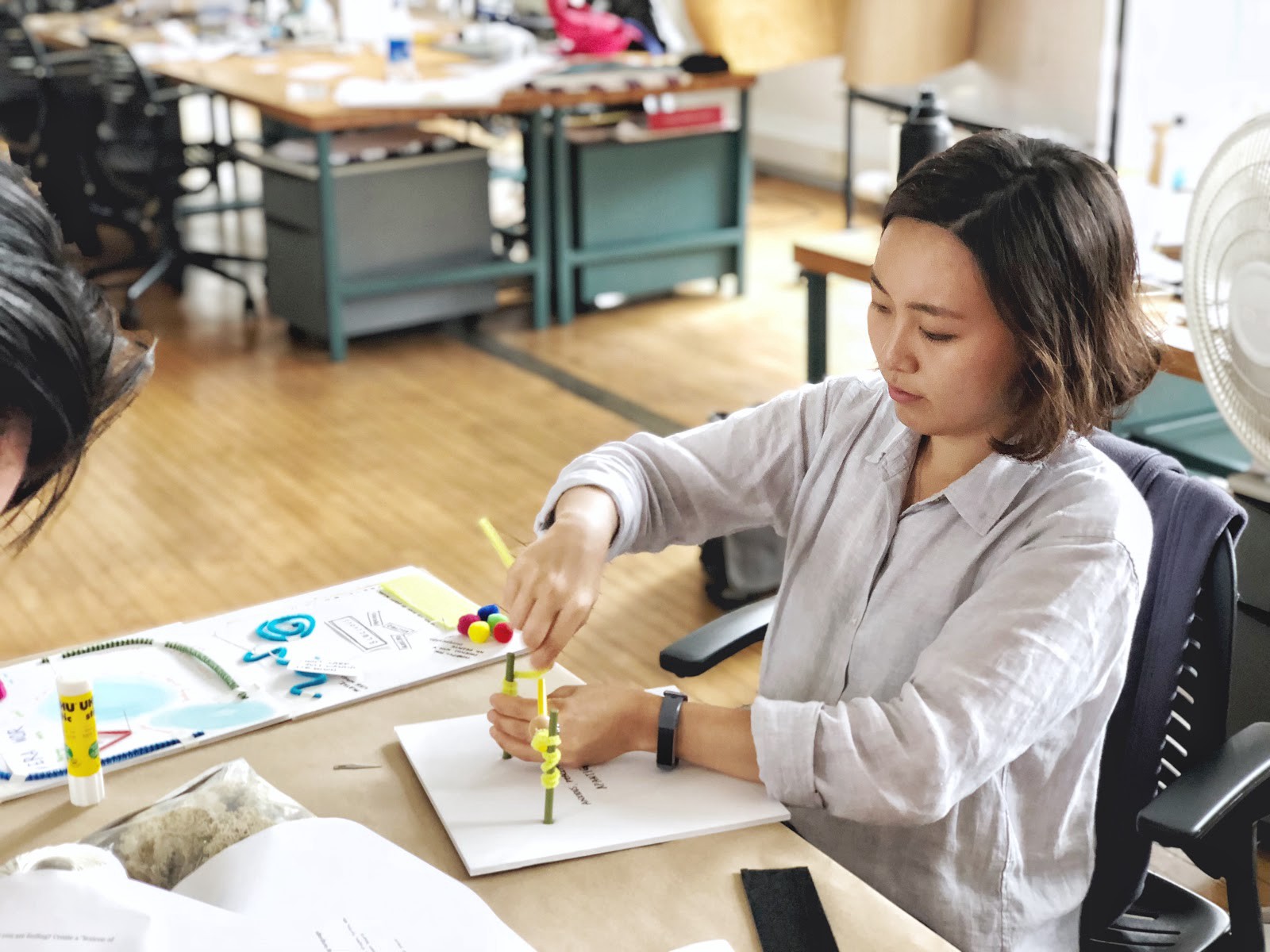
Project Summary
Common words are difficult to apply to everyone in the same way. We come from different places, languages and contexts and each have our own associations with the relatively narrow set of words we use to express ourselves. How can we better express ourselves to others? How can we find more clarity in the abstract?
Lexicon of Feelings is an interactive installation that creates a space for people to engage with their mental health in a non-traditional way. Through 5 different stations, people are challenged to use abstract words, shapes, colors, textures, forms, etc. to bring clarity and understanding to how they feel in the present.
This installation aims to create new vocabulary to express feelings associated with mental health. This is a participatory design project that encourages everyone to create his/her own piece individually to express his/her mental state. At the same time, every individual “lexicon of feelings” contributes to our public community installation to allow people to share their thoughts with others and gain insights. Participants are encouraged to follow the guide below at each station:
How It Works / Our Stations
The Lexicon of Feelings encourages people to reflect on their own mental health in a private way while leaving a public artifact. Using different materials, combining existing language, and creating a new vocabulary maintains a sense of individuality and validates feeling that are difficult to express. The Lexicon of Feelings creates a collection of new words that are deeply personal and unique, while also drawing parallels within the CMU community.
- Your Feelings In 3 Words
How are you feeling at the moment, today or recently?
Write down 3 words you are feeling - Mash-Up!
Mash-up, scramble your 3 words to invent a new word — your own feeling-language. Write yours on the line of the foam board - What does your word feel like? Look like? Sound like?
Feel free to pick the materials provided and explore textures, colors, shapes, forms, etc. Show us what your word feel like and put the materials on your foam board. - Annotate your “feeling definition” so others can navigate your piece!
- Pin up your vocabulary.
Process
We started the exploration process, by trying to understand some of the difficulties with managing control over one’s mental health. A common struggle is the inability to express a feeling or notion to those around you. Existing languages are often insufficient to express deeply personal and unique experience.
During the exploration process we utilized a variety of materials in combination with existing words to create a new representation of one’s mental state. Each participate had the freedom to use whatever materials or existing words to construct a new vocabulary which more accurately represented what they were experiencing.
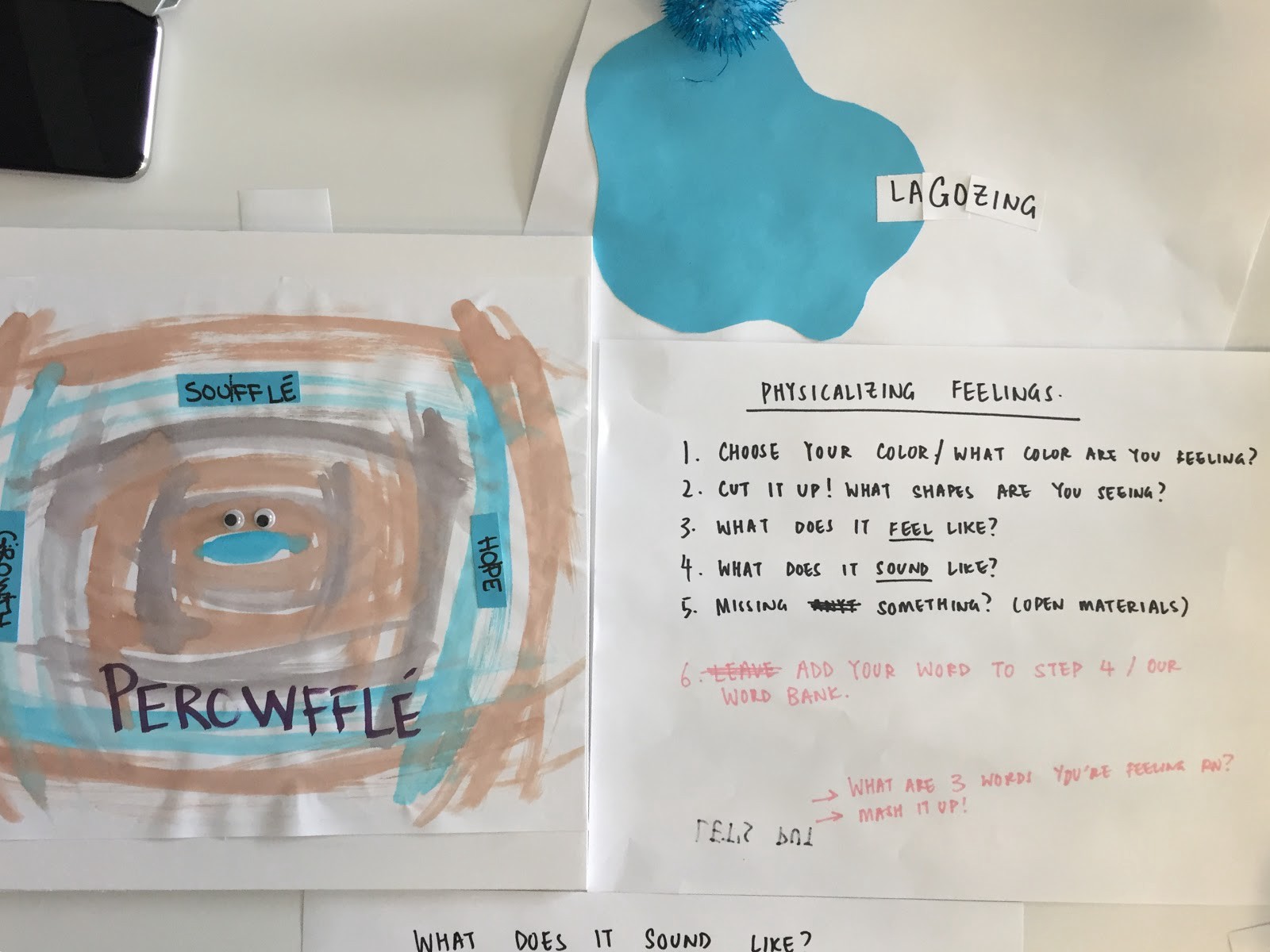
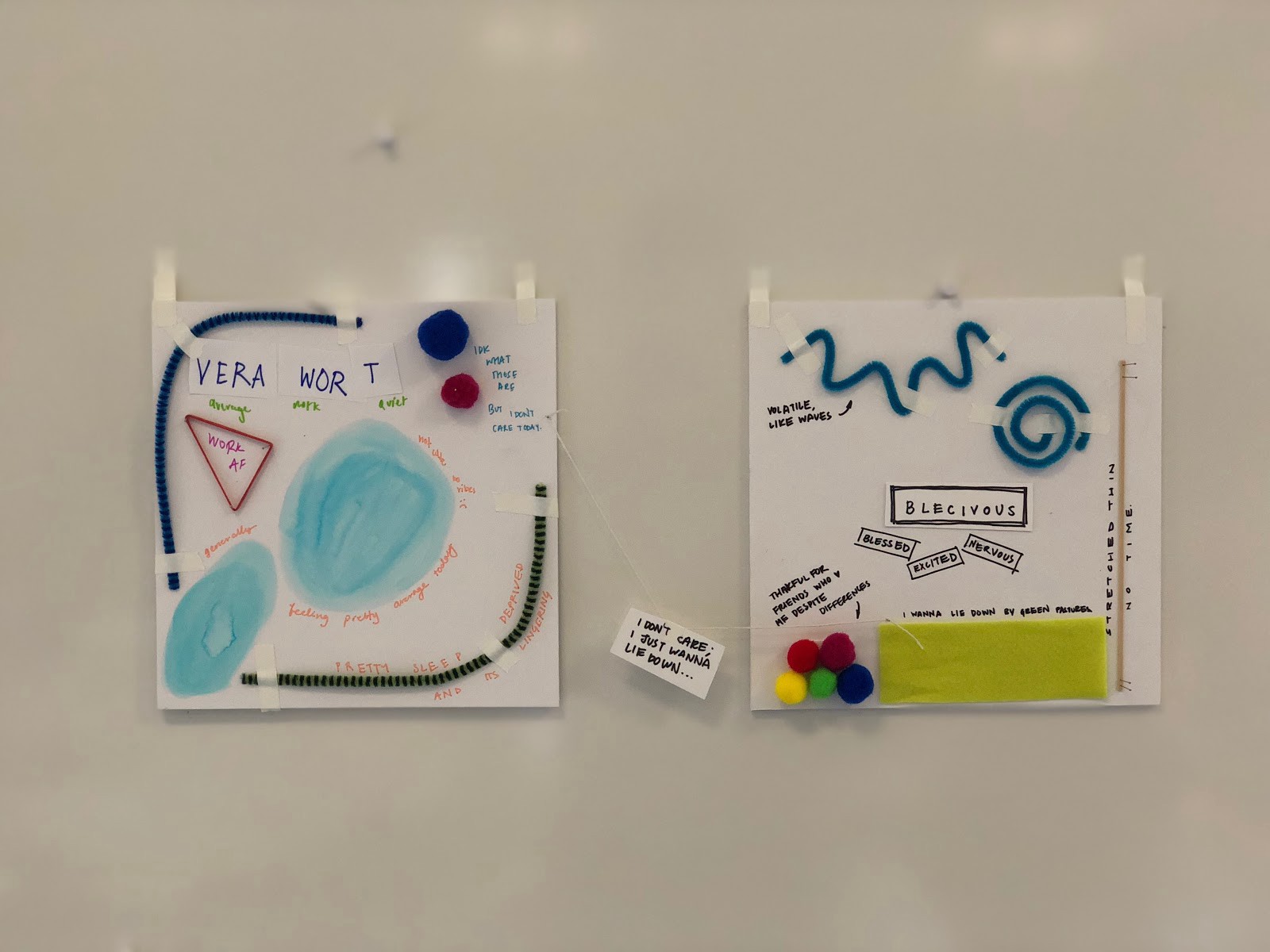
First attempts of activity by team
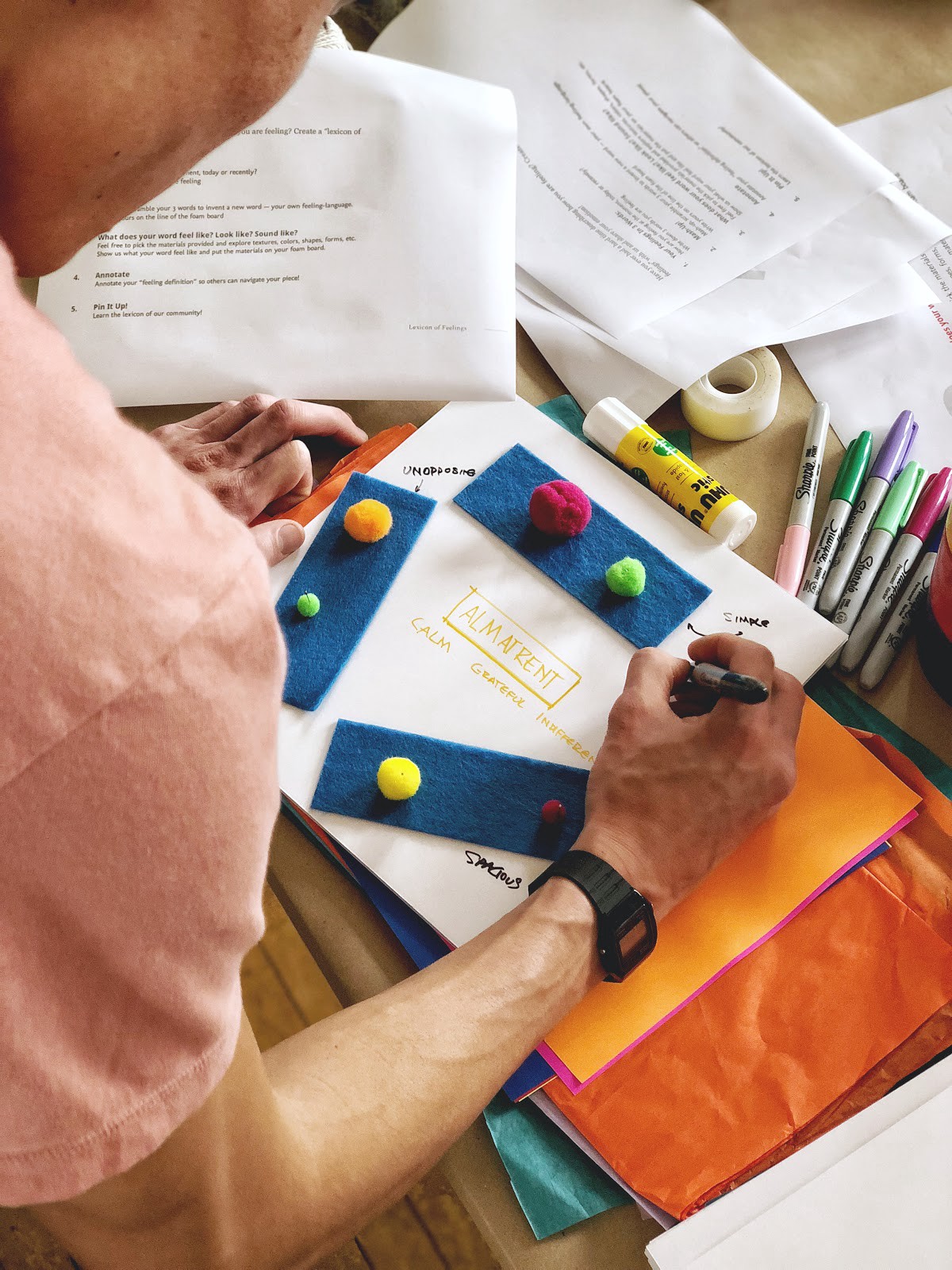
Group experiences in design studio
Insights & Learnings
The experience itself is meant to be individual and self-guided. We provided the materials and step-by-step instructions but allowed each participant to create what felt right to them. Although many of the participants worked at the same time, and those that did often drew inspiration from each other.
We noticed during the process, as people could see the previous words that participants created, they were able to draw parallels and relate to a similar emotion. Although each final word was unique, and had a very different visual aesthetic, there were several root words that appear more than once including “anxious”, “happy”, “excited”, and “hopeful”.
Many of the participants noted that the process of assembling the board was therapeutic. Similar to how many people use coloring books, knitting, or other tasks to calm the mind. Likewise, choosing words to describe a feeling or state of mind allowed the participants to identify and pinpoint a particular mental state.
Some participants found it easier than others to think of root words, or use the materials to create a complimentary visual. The audience that participated in the process tended to be more visual, while those with less of a design background, often found picking words to be the most helpful. Although the materials and restrictions were the same for everyone, each person created a uniquely personal word and representation which related back to our hypothesis that the existing language was insufficient to express certain aspects of mental health.
